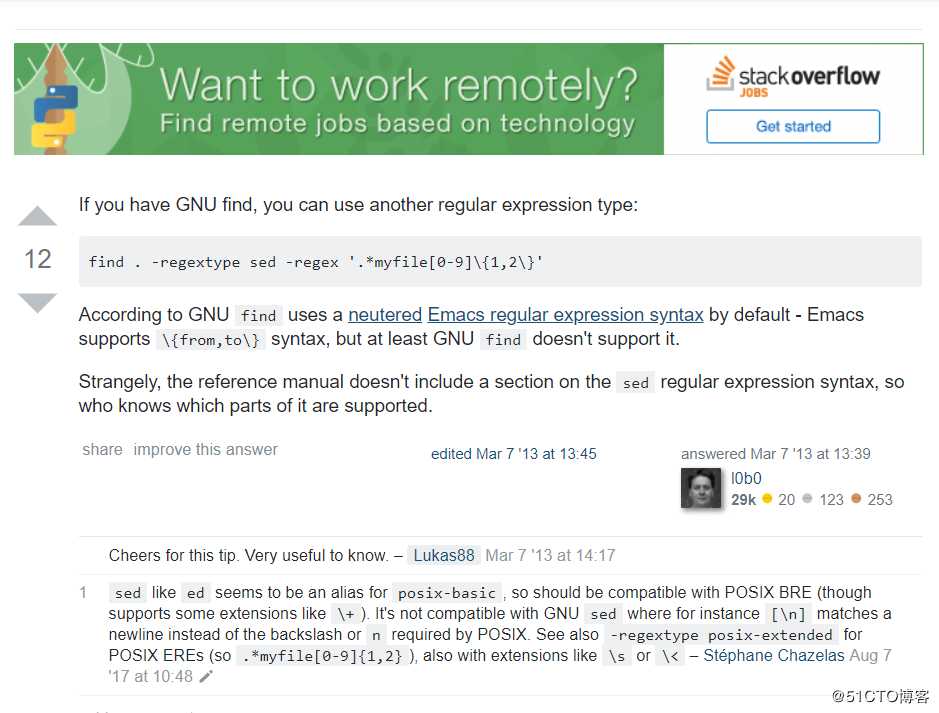linux 学习过程中的坑之 find 正则表达式
Posted
tags:
篇首语:本文由小常识网(cha138.com)小编为大家整理,主要介绍了linux 学习过程中的坑之 find 正则表达式相关的知识,希望对你有一定的参考价值。
1 标准的正则表示式 格式. 表示任意单个字符
-
表示任意次数
+ 表示1次或1次以上
{3} 表示精确匹配次数为3次
{n,m}表示n次到m 次之间
^ 行首锚定 $行尾锚定
\< 单词首部锚定 \> 单词尾部锚定
2 扩展的正则表达式 相对标准的正则表达式 在次数表示的方面只是少了\ 其他都一样
那么问题来了
find -regex 此时的regex 是使用的正则表达式
此时用到+ 没有使用+ 表示他是使用的扩展的正则表达式,
在实验环境中 所有的文件为 issue issue1 s1 scripts/ ssss
find -regex ".s{1,}" 的命令既然无法匹配 到ssss 此文件
find -regex "."s+ 命令却可以匹配迷惑中搜度娘 看看有没有帮助 发现一文章

我们的问题是一致的,那么这个 -regex的选项 到底是不是我们平时使用的正则表达式了?
man 帮助文档
-regex pattern
File name matches regular expression pattern. This is a match on the whole path, not a search. For example, to match a file named./fubar3‘, you can<br/>use the regular expression.bar.‘ or `.b.3‘, but not `f.r3‘. The regular expressions understood by find are by default Emacs Regular Expressions,
but this can be changed with the -regextype option.发现没有说明 只是说有个 -regextype 选项有介绍他采用的模式 -regextype type Changes the regular expression syntax understood by -regex and -iregex tests which occur later on the command line. Currently-implemented types are emacs (this is the default), posix-awk, posix-basic, posix-egrep and posix-extended.
重点来了 他默认使用的是 emacs 风格的 非我们常用的 posix-egrep and posix-extended 格式的正则表达式。问题解决 ,
总结 新手在学习过程中第一时间肯定是怀疑自己的命令输入有问题,根本就不会考虑使用不同风格的问题,等自己确定自己的命令输入没有问题了,才会开始查帮助文档。总的来说 官方的文档其实还是挺全的,就是英语不好的同学,查看起来特别花时间。
以上是关于linux 学习过程中的坑之 find 正则表达式的主要内容,如果未能解决你的问题,请参考以下文章